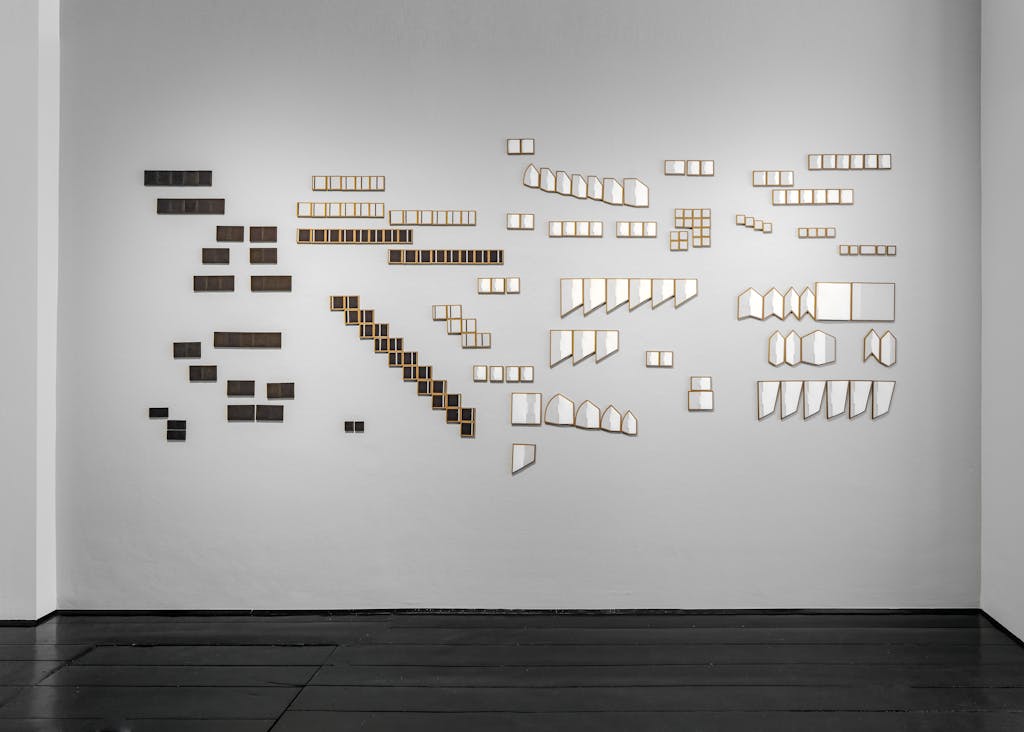It is not unusual for Butail to conceive her works and projects in an interdisciplinary way. Her preferred formal visual language is geometry: it is used to understand how different composite elements of a unit relate to a whole. Wall installations often resemble a network of frames, “like doors and windows connected”. The metaphor of a house, referring to the levels of being enclosed, confined, but also open, forms a frequently recurring essential idea in Butail’s minimalist arrangements.
One of the artist's ongoing work-in-progress is 'Of Martand', created in 2021. Titled after the Sanskrit name of the Hindu sun god, Butail refers to the principle of the sun, which includes the idea of darkness and is mentioned in ancient traditions of the Rig Veda. From this series of works, she is showing a piece created in 2022, entitled 'Of Martand (Diptych)': a series of white and black book models that she has set in over 200 wooden frames of different shapes and arranged on the wall. Here, Butail used two of the sixteen different memorisation techniques used in India to preserve the oral tradition. These objects pay homage to ancient wisdom, to stories passed down orally and recall a tradition of stories within stories found in mythologies and literature.
The sculpture 'Usha and Ratri (Dawn and Night)' (2022) is about more than storytelling. Two identical wooden constructions, reminiscent of unfinished furniture, are connected to each other with parallel strands of wool thread. One of the wooden pieces lies flat, while the other is tilted and held in place by the threads, which are tightened by the perceived instability of the object – though the opposite is true. The sculpture, which suggests associations of a loom, visualises a reciprocal togetherness, a never-ending conversation that provides strength and tension.
Astha Butail (b. 1977 in Amritsar, India) lives in Gurgaon, India.
Butail conducted her year-long research project The Absence of Writing in which she explored different narrative techniques in the ancient Persian Avesta, the Jewish Torah and the Hindu Veda texts on a journey through Iran, Israel and India. This research was part of the BMW Art Journey Award that she received in 2017, which also involved exhibitions at the sites of her research. She participated in the Jerusalem Biennale for Contemporary Art in 2019; she was represented in a group exhibition at KEWENIG Palma the same year.
